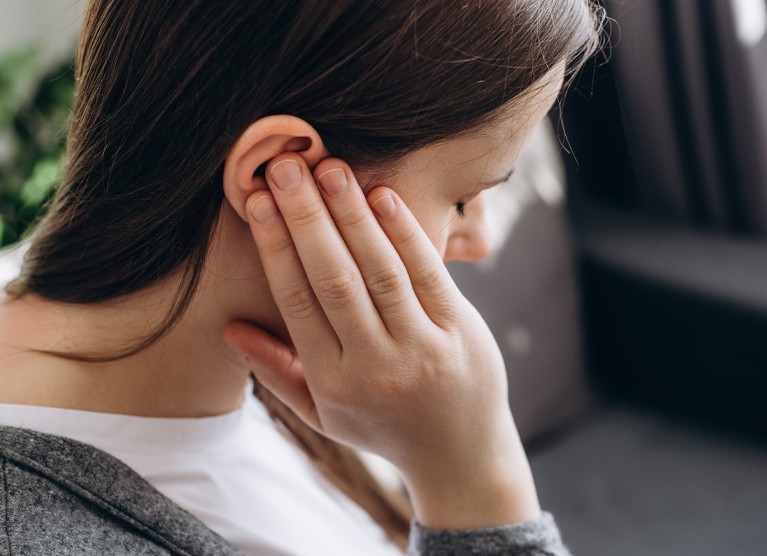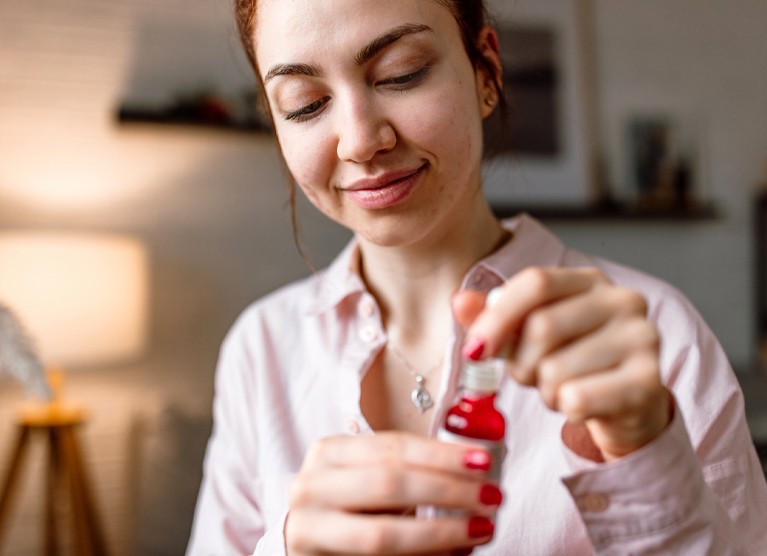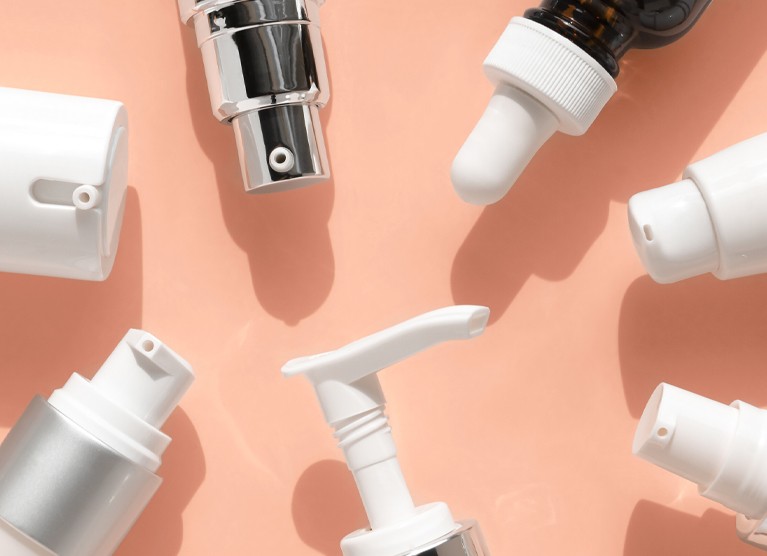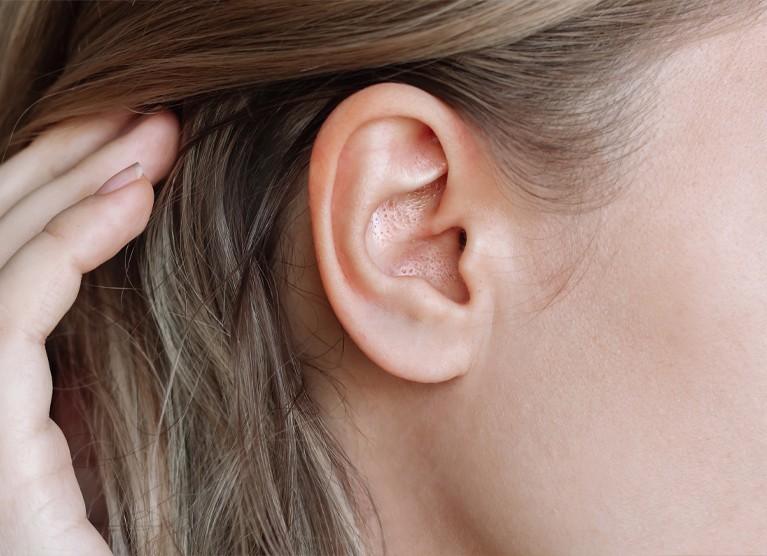Ear Acne: What It Is, Why It Happens, and How to Treat It
We’ve all had the occasional breakout, but when a pimple shows up in or around your ear, it can be more than just a nuisance—it can be downright painful.
Ear acne, while not uncommon, can be tricky to treat due to the sensitive and often hard-to-reach areas of the ear. Whether you’ve noticed a painful bump inside your ear canal or recurring pimples on your earlobe, understanding what causes these breakouts and how to manage them can bring relief—and healthier ears.
Let’s explore everything you need to know about ear acne, from causes and prevention to safe treatment options.

What Is Ear Acne?
Ear acne is a form of acne that appears on or inside the ear, including the earlobe, behind the ear, or even deep in the ear canal. Like acne on other parts of the body, ear pimples are caused by clogged pores, but their location often makes them more uncomfortable and noticeable.
Depending on the severity, ear acne may appear as:
- Whiteheads
- Blackheads
- Red, tender bumps
- Painful cysts
Because the skin in and around the ears is sensitive, even small pimples can feel disproportionately painful.
Common Causes of Ear Acne
So, why does ear acne happen in the first place? Here are some of the most common causes:
1. Clogged Pores
Just like acne on your face or back, ear acne starts with clogged pores. Dead skin cells, excess oil (sebum), and debris can build up and create a blockage.
2. Earwax Buildup
While earwax is natural and protective, excessive buildup can trap oil and bacteria in the pores, leading to breakouts.
3. Poor Hygiene
Touching your ears with dirty hands or using unclean earbuds, hearing aids, or headphones can transfer bacteria to your skin, triggering acne.
4. Hormonal Changes
Fluctuating hormones—especially during puberty or periods of stress—can cause overactive oil glands, increasing the risk of breakouts.
5. Friction and Sweat
Wearing hats, helmets, or headphones for long periods creates a warm, moist environment that promotes bacterial growth and skin irritation.

Where Does Ear Acne Appear?
Ear acne isn’t limited to just one area. Here’s how it might show up in different parts of the ear:
Inside the Ear Canal
Pimples deep in the ear can feel especially painful because of limited space and increased nerve sensitivity. These may be caused by bacteria introduced from earplugs, earbuds, or scratching the inside of the ear.
Behind the Ear
Often overlooked during face-washing, this area can collect sweat and dirt. Poor hygiene or buildup from hair products may lead to clogged pores and painful pimples.
On the Earlobe
This area is especially prone to breakouts from earrings (especially if the piercing is new or infected) and headphone pressure. Allergic reactions to metals like nickel can also trigger acne-like bumps.
On the Ear Cartilage
Ear cartilage pimples are often caused by pressure, like lying on your side for long periods or wearing over-ear headphones. These breakouts can also be linked to piercings or sweat buildup.

How to Treat Ear Acne Safely
The good news? Most ear acne can be treated at home with some gentle care and patience. Here’s what we recommend:
- Use a Warm Compress: A warm compress can help reduce inflammation, ease pain, and encourage natural drainage of pus if the pimple is close to the surface.
- Keep It Clean: Use a gentle cleanser to wash the area. Avoid harsh scrubs or inserting anything into your ear canal. Stick to fragrance-free or dermatologist-approved products.
- Over-the-Counter Treatments: Benzoyl peroxide or salicylic acid spot treatments can help, but avoid letting these get inside your ear canal. Always follow instructions carefully.
- Avoid Picking or Popping: We get it—it’s tempting. But squeezing an ear pimple can lead to infection, scarring, or even deeper blockages. Let the pimple heal naturally or consult a doctor if it becomes painful or persistent.
When to See a Doctor
If your ear acne doesn’t improve after a week or becomes more painful, swollen, or starts leaking pus, it’s time to consult a healthcare provider. In rare cases, a dermatologist or ENT (ear, nose, and throat) specialist may need to drain a cyst or prescribe medication.
Additionally, if you're experiencing hearing changes along with acne inside the ear canal, a hearing care professional can help determine if earwax or inflammation is affecting your hearing.

How to Prevent Ear Acne
As with most skin conditions, prevention is key. Here are a few tips to help keep your ears clear:
- Practice Good Hygiene: Wash around your ears daily and after workouts.
- Clean Your Devices: Disinfect earbuds, hearing aids, and headphones regularly.
- Be Mindful of Hair and Skin Products: Avoid heavy or pore-clogging products near your ears.
- Keep Ears Dry: Dry your ears well after showering or swimming.
- Avoid Pressure and Friction: Take breaks from tight headgear or over-ear headphones.
- Eat Well: A balanced diet low in sugar and processed foods supports healthy skin.
Can Ear Acne Affect Hearing?
While it’s rare, pimples in the ear canal can cause temporary hearing disruptions—especially if there's swelling or infection blocking the canal. More often, discomfort or pressure may simply make it feel like your hearing is muffled.
If you're unsure whether your ear acne is interfering with your hearing, our Beltone hearing care professionals are here to help with a comprehensive hearing evaluation.
Bottom Line
Ear acne may not be a glamorous topic, but it’s a common concern—and one worth talking about. With the right care and hygiene habits, you can reduce breakouts and keep your ears feeling their best. And remember, if you're dealing with recurring pimples or experiencing changes in your hearing, Beltone is always here to support your ear health—inside and out.
Need help hearing clearly? Schedule a free hearing screening* at your nearest Beltone location today.

Take Online Hearing Test
Take our free at-home hearing loss test as a first step on your journey to better hearing.

Book Your Free Appointment

Reviewed By
Kathy McGowan, AuD CCC-A, Doctor of Audiology
Kathy McGowan is the Manager of Managed Care Programs with Beltone Corporation . Kathy worked with the Professional Development Training Team as well as the Operations Team and Beltone Corporate Retail for 8 years before being promoted to her current position. Prior to joining Beltone Corporate, Kathy worked for 10 years as an Audiology Manager in a private practice. She has worked in many settings as an Audiologist including an ENT practice, a hospital, an Optical and Hearing Company, and in the Military, retiring as a LtCol. Kathy earned her Bachelor’s in Speech and Hearing and Master’s in Audiology from Ohio University in Athens, Ohio, and went on to receive her Audiology Doctorate from A.T. Still University School of Health Sciences. Kathy is currently licensed in seven states.

